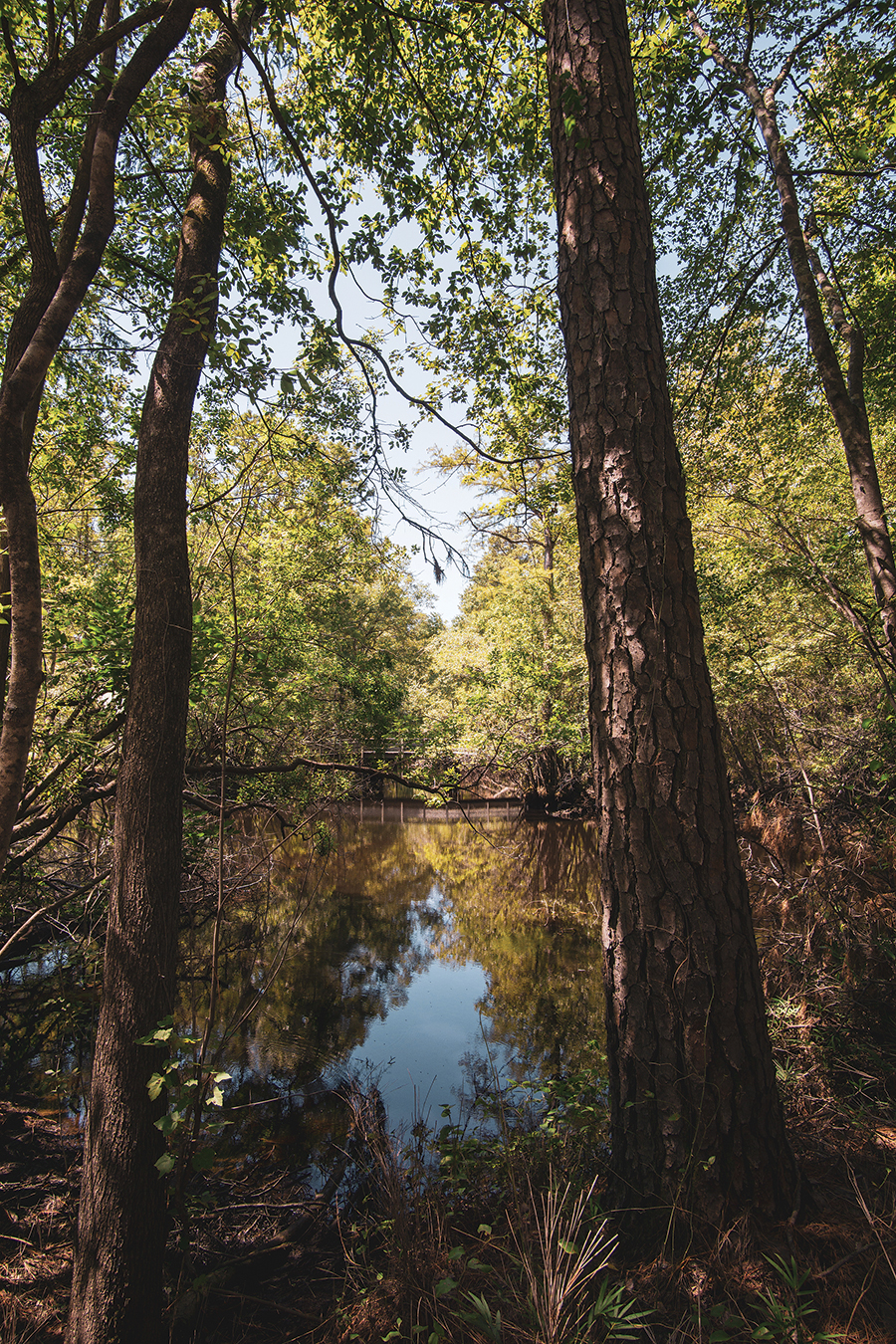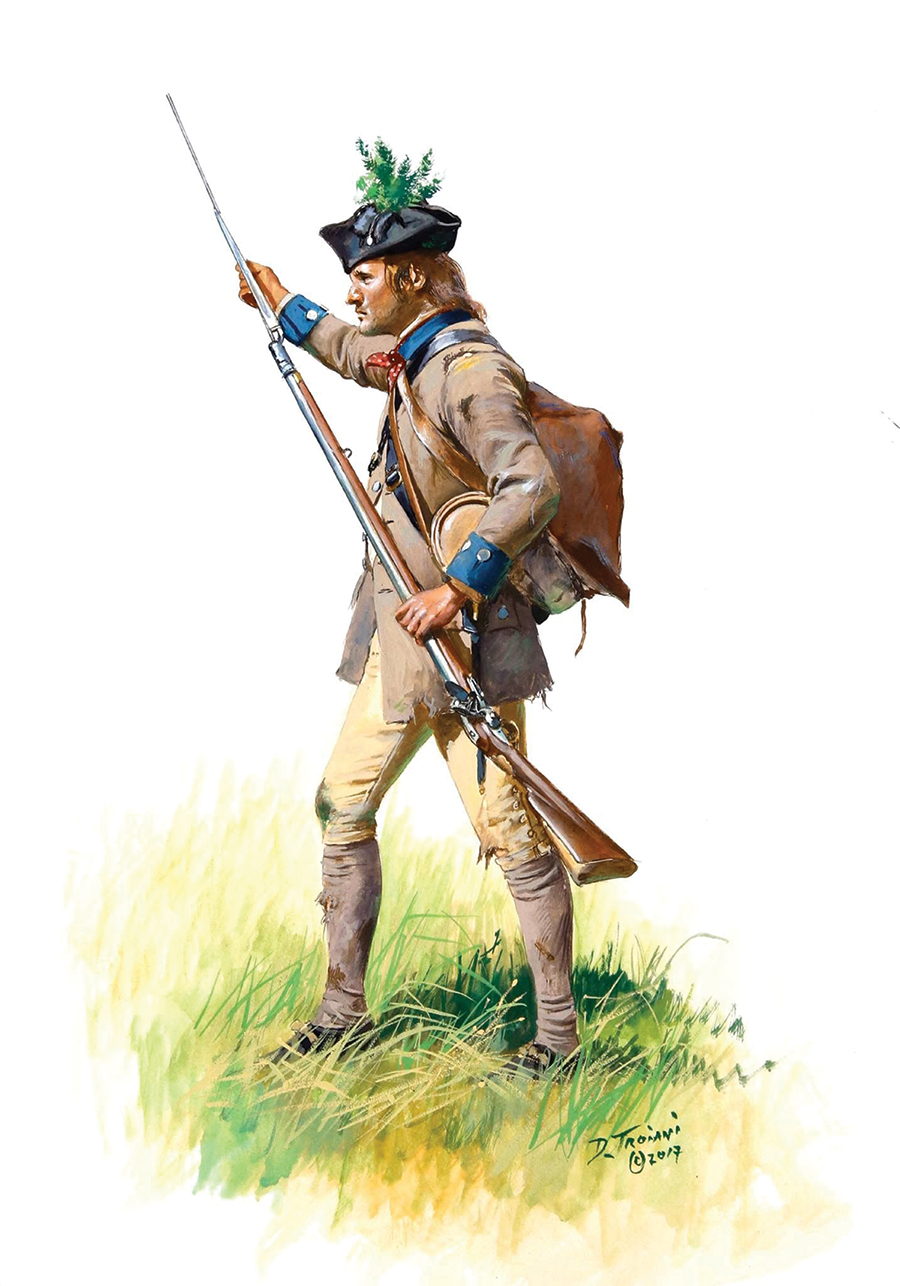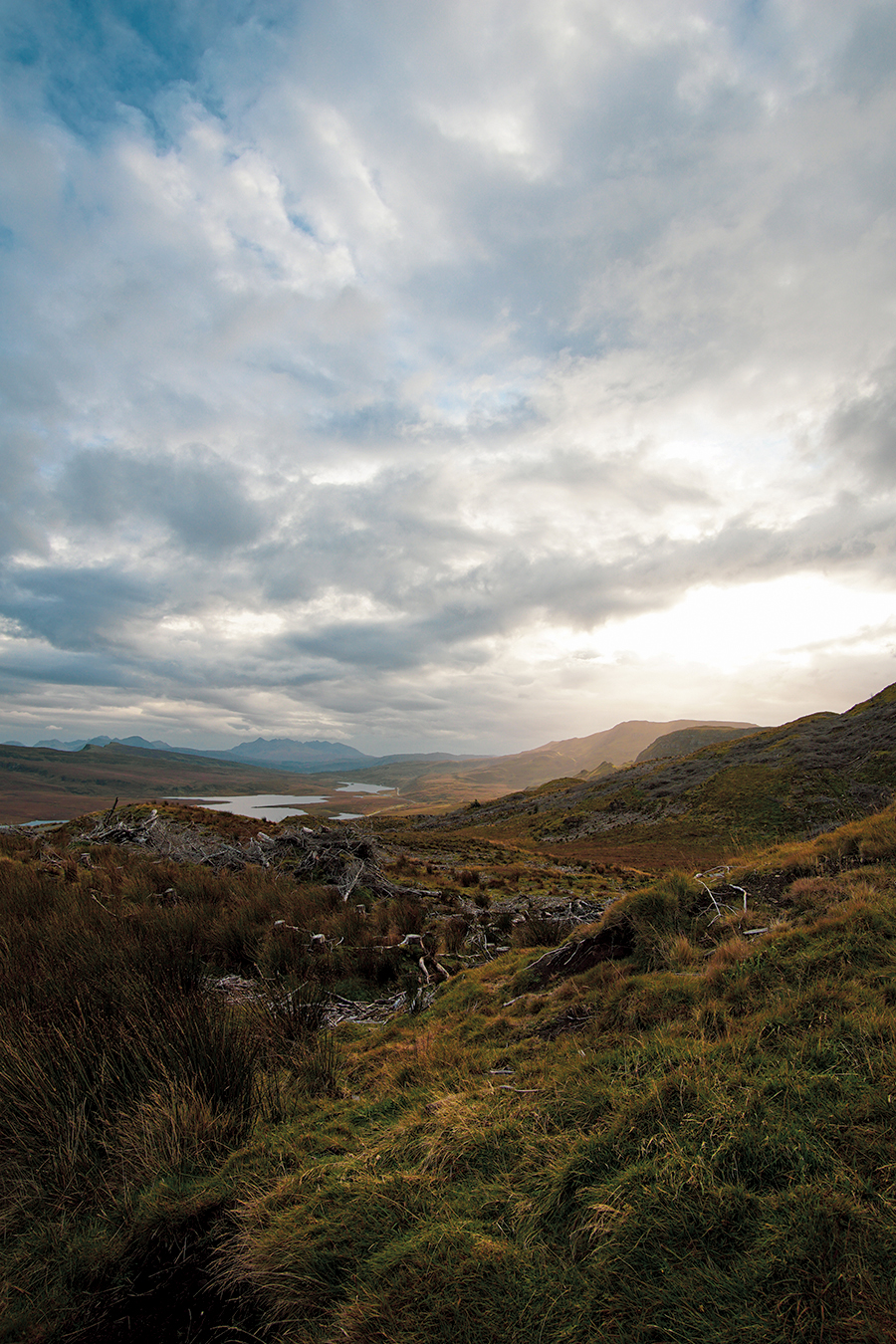Flora MacDonald and the Highland Scots of the Cape Fear
By Kimberly B. Sherman
Salty waves lapped the sides of the Baliol as the sloop crossed the bar to enter the Cape Fear River in the early fall of 1774. It had been an arduous journey from the western isles of Scotland to the colony of North Carolina. Anxious passengers breathed a small sigh of relief with their safe arrival. Perhaps in that moment Flora MacDonald looked over at her husband and smiled as she contemplated the reality of making a new home among the Highland Scots who had already settled in the colony’s Cape Fear River Valley.
Several economic factors had propelled these Scots to cross the Atlantic: Their cattle were dying, the prices of their crops were faltering, and their landlords continued to raise their rents to astronomical levels. North Carolina offered the promise of land ownership. One prosperous immigrant deemed it “the best poor man’s country.” In their native Gaelic they exclaimed, “Do I a dh’iarriudh an fhortain do North Carolina” — “Going to seek a fortune in North Carolina.”
Their stories were similar. Family members having already journeyed from Scotland to the piney woods along the Cape Fear River sent letters back to kin, beckoning them to join. By 1776, there were nearly 15,000 Highland Scots living in the Upper Cape Fear, making it the largest community of Scots in the British North American colonies.
One story, however, stands out. The Baliol’s most famous passenger, and best known of all the Scottish immigrants, was Flora MacDonald.
Born in 1722 on the island of South Uist in Scotland’s Outer Hebrides, Flora MacDonald was a member of the MacDonald clan, the largest in all of Scotland. After her father died, Flora was raised and tutored in the homes of her kinswomen, first by Lady Clanranald and then Lady Margaret, wife of Alexander MacDonald of Sleat, on the Isle of Skye. She may have finished her education in the capital at Edinburgh. Years later, a popular English writer described Flora as “a woman of soft features, gentle manners, kind soul and elegant presence.”
For all her education, Flora MacDonald is best remembered for helping Charles Edward Stuart, popularly known as Bonnie Prince Charlie, elude capture by British forces after the battle at Culloden in April 1746. The Stuart family and their Jacobite supporters had attempted to reclaim the Scottish throne in an ill-fated rebellion. As the story goes, Flora accompanied the prince, allegedly disguised as an Irish maid, in his escape by boat “over the sea to Skye.” For her role in the young Stuart’s escape, Flora spent a year imprisoned in London.
When she returned to Scotland in 1747, Flora did what most young women were expected to do: She married. Flora and her new husband, Allan, a distant kinsman from the MacDonald clan, set up house at Kingsburgh on the Isle of Skye, where Allan was a factor, or estate manager. Unfortunately, Allan MacDonald was more a “soldier and a gentleman” than a farmer and a businessman, falling further into debt with his landlord by unwisely purchasing a large herd of cattle he could not afford.
Like many other Scots, the MacDonalds witnessed a sharp rise in their rent over the years, while prices for their agricultural goods plummeted. In 1771, known as the “Black Spring,” a severely cold and snowy winter had led to high mortality among cattle herds, particularly among those belonging to the MacDonalds. As a result, clan members began leaving Skye in droves for North Carolina.
The magnetism of North Carolina had long attracted settlers. As early as 1739, the first ship laden with Highland families had arrived at the Cape Fear. A steady stream of migrants continued, peaking in the latter 1750s and, again, in the early 1770s. Edinburgh’s Scots Magazine reported the comings and goings of such voyages. Between April and July 1770 alone, some 1,200 people left Scotland for North Carolina.
By 1774, Allan and Flora MacDonald also heard the clarion call of North Carolina. Flora wrote that they planned to “begin the world again, anew, in another Corner of it.” When they made landfall at Wilmington with their youngest children, they found a bustling seaport inhabited by a wide variety of people from across the Atlantic world, including families like their own, merchants, shippers, planters, doctors, lawyers and enslaved African-Americans. Hearing of the MacDonalds’ arrival, Wilmington’s elite invited Flora and Allan to a ball reportedly held in their honor. Flora’s reputation as the great Scottish heroine apparently preceded her.

The MacDonalds made their way westward, up the northwest Cape Fear River to the settlement of Cross Creek (near today’s Fayetteville), where the majority of North Carolina’s Highlanders had set up homes, businesses and plantations. They settled in Anson County on a farm they named Killiegray.
The possibilities seemed endless for the MacDonalds. And then came the Revolution.
American colonials had been debating their representation and British Parliament’s oversight for nearly a decade, but concerns reached a fever pitch by 1775. Royal authority collapsed across North Carolina, and increasing tensions forced families like the MacDonalds to choose a side. Would they join the American cause or remain loyal to King George III? It may seem odd that many Highland Scots in North Carolina chose to support the very crown that had brutally crushed the Jacobite Rebellion in 1745 and wrought major social, economic and political changes to their homeland.
In the end, it was often a practical decision. Supporting British royal authority meant siding with a global superpower — not a rag-tag group of colonists who thought they knew better.
Leadership in London believed that the Highland Scots community at Cross Creek might prove useful in quieting colonial discontent. The British Army sent Scottish officers to North America in hopes of recruiting their support. Men like Brig. Gen. Donald MacDonald and Lt. Col. Donald MacLeod arrived in North Carolina in 1775 claiming they were visiting family in the Cape Fear, but with the true intention of creating a Scots Loyalist battalion. Earlier in the summer, Allan MacDonald traveled in disguise to see Royal Gov. Josiah Martin at Fort Johnston (in present-day Southport) in hopes of raising a Highland regiment for the Loyalist cause.
Martin and his supporters believed that clan leadership among the Highlanders and “enthusiastic love for the country from which they are descended” would still hold sway over the people. He estimated that some 3,000 Scottish Highlanders might descend the Cape Fear River to meet up with 20,000 British troops under Gen. William Howe, who would soon arrive at the mouth of the river. The governor’s men sent out a letter calling for a rendezvous of Loyalists at Cross Creek in early February 1776. Word reached surrounding farms. Allan MacDonald and his son Alexander responded to the call.
About 1,100 men mustered into a makeshift militia, only 520 of which owned firearms. With the help of local raids and country merchants, they gathered additional weapons and mocked up their own British flag from scraps of textiles. News reached the Loyalists that Patriot forces had assembled to cut the Loyalists off from Wilmington and the Lower Cape Fear. But no word had come from Martin on the arrival of the British army.
Legend tells us that Flora MacDonald’s celebrity led her to give a rousing speech in Gaelic to the bedraggled Highlanders assembled at Cross Creek, urging them to fight for king and country. While the story is riveting, there is no evidence to suggest that Flora made such a passionate speech to her fellow countrymen. Fact or fiction, her story did not end there.
The Highlanders went on the offensive, leaving Campbelltown, North Carolina (today Fayetteville), on Feb. 20, 1776. They passed slowly through swampy terrain and approached a tributary of the Black River with caution. Patriot militia men under Richard Caswell had hastily doubled back to the eastern side of Widow Moore’s Creek (in present day Pender County), where they dug in for the defensive.
In the cold hours before dawn on Feb. 27, 1776, the Scottish officers led their Loyalist militia toward the Patriot encampment. Some of the men under Alexander MacLean stumbled upon a bridge spanning the creek that had been disassembled and its girders greased with soap and tallow. Patriot sentries who spotted the Scots called for identification, to which MacLean responded that he was a friend — a friend of the king. The sentries disappeared, and MacLean, thinking they might be fellow Loyalists, made a call in Gaelic. With no response, the rallying cry of “King George and broadswords!” went up, and the Loyalist militia plowed across the swamp.
The battle was short-lived. All of the men who managed to cross the tributary were mowed down by musket and cannonfire, including Donald McLeod, whose body was found only a few paces from the Patriot earthworks. In all, there were 50 Scots Loyalist casualties. Those who did not cross either hunkered down to return fire, or fled. At least 850 were captured in their retreat. Allan and Alexander MacDonald were among them.

The Loyalists’ defeat at Moore’s Creek effectively subdued organized resistance in North Carolina for the coming years. On April 12, 1776, the fourth North Carolina Provincial Congress met at Halifax, North Carolina, to consider the state of the government. They passed the Halifax Resolves, ordering that North Carolina delegates to the Second Continental Congress in Philadelphia would support American independence from Great Britain. By the end of the year, independence had been declared, and North Carolinians drafted a new state constitution. The province, meanwhile, plunged into civil war.
Those Scottish Loyalists captured by Caswell’s forces after Moore’s Creek were first hauled off to Halifax. The American forces immediately paroled the militia, but imprisoned Loyalist officers before sending them to Philadelphia — far from their homes and families. Allan’s wife, Flora, was left behind:
“All this time in misery and sickness at home, being informed that her husband and friends were all killed or taken . . . Long oppressed, with straggling parties of plunderers from their Army, and night robbers, who more than once threatened her life wanting a confession, where her husband’s money was.”
At Killiegray, Flora faced potential violence. Those in service to her family ran off. Livestock was often stolen from rural farms, and homes burned. When Flora visited “other poor Gentlewomen” who were in similar circumstances, however, they treated her with contempt. They blamed her husband for being “the author of their misery, in raising the Highlanders.” On one of these visits she even fell from her horse, breaking her right arm. For two years, Flora MacDonald wrote that she “remained in this deplorable condition” until the parole of her husband and the calling of a flag of truce for her family’s passage from Wilmington to New York.
In the South, many Loyalists fled to British-occupied Charleston or Savannah and in the North, their Loyalist brethren found refuge in Boston, Philadelphia and New York City. By 1777, North Carolina required all men age 16 or older to take an oath of allegiance or leave the state. Additional legislation would banish many Scotsmen outright. With little choice, Scottish Loyalists had to decide between remaining in America, risking violence and retribution, or abandoning their homes for a different part of the British Empire.
In the meantime, Allan MacDonald had been released and left for New York City, where he assisted in raising a volunteer company of “Scotch Refugees from Carolina & Virginia.” He later received a commission to join the Royal Highland Emigrant Regiment in Nova Scotia.
Flora arrived in New York exhausted and weakened by illness and the anxieties of conflict, but she dutifully gathered her family and followed Allan to Nova Scotia. “I was obliged tho’ tender to follow, and was very nigh death’s door by a violent disorder, the Rough sea, and long passage, had brought on at last landing in Halifax,” Flora lamented.
Upon arrival, the refugees set off on foot, trudging through forests and snow for the town of Windsor. “There we continued all winter and spring, covered with frost & snow, and almost starved with cold to death, it being one of the worst winters ever seen there,” Flora recollected. It was a brutal change, and it would not be the end of the MacDonalds’ misfortunes. Over the course of the following year, Flora met with several accidents — dislocating a wrist and an arm in multiple falls. “When I got the better of this misfortune, I fixed my thoughts on seeing my native Country,” she wrote. She was, by this point, nearing 60.

Allan MacDonald obtained passage to Britain onboard the Lord Dunmore for Flora, their daughter and a few other young women. When the ship made its way up the Thames, she “received the melancholy news of (her) son Alexander’s Death . . . being lost in his way home, having got leave, on account of his bad state of health” after being wounded in battle. Not long after, she heard of the loss of the Villa de Paris, on which her son Ranald was captain. The emotional and physical toll was great:
“Those melancholy strokes, by the death of my Children who, had they lived, with God’s assistance, might now be my support in my declined old age brought on a violent fit of sickness, which confined me to my bed in London, for half a year, and would have brought me to my Grave.”
Flora and her husband eventually resettled on the Isle of Skye, having come full circle from where they began more than a decade earlier. Their experience is representative of the opportunities and excitement that a new life in America held for Scottish emigrants. In turn, they had experienced the emotional and physical scarring of the Revolution, dislocation and loss of family.
In 1789, Flora concluded, “I may fairly say we both have suffered in our person, family, and Interest . . . without the smallest recompense.”
Flora MacDonald’s story has been told and retold over generations. Through it, we may better understand the opportunities that drew such a distinct body of Scots to early North Carolina and the varied experiences they had when making their new homes like thistles among the pines.
Kimberly B. Sherman received her Ph.D. in history from the University of St. Andrews and is currently a lecturer in history at Cape Fear Community College. Her forthcoming book is titled Intimate Worlds: Scottish Families in Early North Carolina and the Atlantic World. The author would like to thank Pam Sherman, Chris E. Fonvielle Jr. and Jamie Hinrichs for their assistance on this article.


